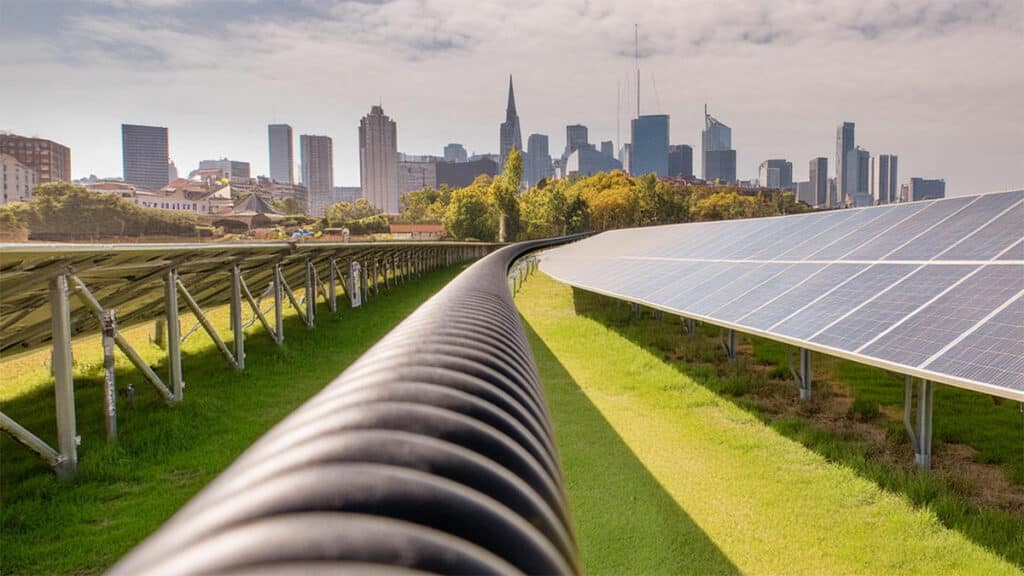Capacitech’s PowerLink cable based supercapacitor is a groundbreaking innovation designed to address the limitations of traditional batteries and enhance energy storage in space-constrained applications.
In the ever-evolving landscape of renewable energy and e-mobility, the quest for efficient and versatile energy storage solutions remains paramount. The problem is that batteries have shortcomings and space is limited. Enter Capacitech’s PowerLink solution: the conformal and high-power energy storage solution designed to handle power surges and fluctuations to complement batteries and energy harvesting resources in space constrained applications. This groundbreaking innovation will transform where the world stores its energy.
One of the key advantages of the PowerLink lies in its ability to enhance existing battery technology. By complementing traditional battery systems with high power energy storage, we can extend their lifespan, increase efficiency, and optimize performance. This means longer-lasting batteries for electric vehicles, more reliable energy storage for grid applications, and enhanced sustainability across the board. The PowerLink protects the battery from the short bursts of high power that typically damages batteries, and allows the battery to handle only the steady state operation.
“The PowerLink handles power surges, bends around obstacles to optimize space, and modules of the PowerLink can be connected together so customers can easily expand solution based on their needs. ” said Joe Sleppy, CEO
Here are some key features of the PowerLink:
- Flexible Form Factor: The PowerLink is physically flexible, allowing it to bend around obstacles and fit within available space. Unlike rigid batteries, it provides more placement options, making it ideal for tight spaces.
- High Power, Rapid Response: While batteries offer long-lasting energy storage, they are generally low power. The PowerLink, on the other hand, uses supercapacitor technology to deliver high power and rapid response. By combining batteries and supercapacitors, we can leverage each energy storage component for its strengths.
- Modular Scalability: The PowerLink is a modular solution that can be easily scaled to higher voltages or power levels through series and parallel connections. Whether you need a small or large system, the PowerLink adapts to your requirements.
- Space Efficiency: One of its unique advantages is that it doesn’t compete for space with batteries. In space-constrained applications, where every inch matters, the PowerLink fits seamlessly alongside other components.
Here’s a quick overview of the available PowerLink modules:
- Small Module: Fits inside a 5-inch conduit (approximately 3.5 feet long) and delivers an impressive 9 kW of peak power. You can connect multiple small modules in series or parallel to meet your voltage, energy, and power needs.
- Large Module: Designed to fit inside a 7-inch by 2-inch ribbon (approximately 8 feet long), the large module delivers a whopping 72 kW of peak power. Again, you can connect these modules as needed.
- Custom Configurations: Need even more power? Capacitech offers custom configurations, allowing you to tailor the system to your specific requirements.
Technical Specifications:
- Operating Voltage Range: 12V to 1024V
- Operating Temperature Range: -40°C to 65°C
- Peak Power Capacity: Up to 2 MW
At its core, the PowerLink energy storage system is designed to be adaptable by leveraging a unique, long, and bendable form factor. This aligns form and function in ways previously unimagined. It is designed to fit into a wide array of spaces previously untapped for energy storage. This might include cabling infrastructure, the walls of buildings, embedded within infrastructure, or routed around the perimeter of a platform to add storage capacity without competing for space in the footprint.
The synergy between the PowerLink and renewable energy sources is undeniable. As the world strives to transition away from fossil fuels and embrace clean energy alternatives, the need for effective energy storage becomes increasingly critical. The PowerLink can store excess energy generated by solar panels, wind turbines, and other renewables and used for ancillary services while being routed within the available space. For example, the PowerLink can be routed within solar cable trays to avoid purchasing more land or removing panels to make room for a traditional energy storage system while protecting the long-duration energy storage system from small and short-duration discharges that can damage them over time.
In conclusion, the advent of a conformal energy storage system represents a significant step forward in the journey towards a more sustainable future. By harnessing the power of innovation, we can unlock new possibilities for energy storage, enhance existing technologies, and support the widespread adoption of renewable energy sources. Conformal energy storage systems pave the way for smarter, more efficient energy systems that can better meet the needs of our ever-changing world.
